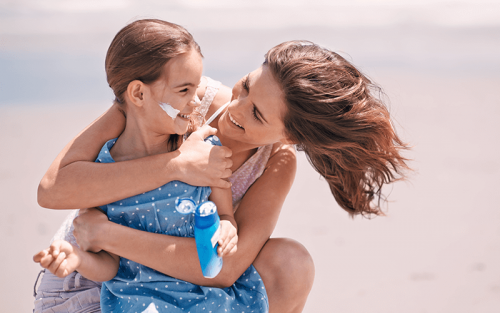If you haven’t heard about the importance of slathering on sunscreen before venturing out in the sun, you’ve probably been living under a rock — where you’re most likely not getting much sun anyway. Sunscreen is a sun-safety staple, but what about all the harsh chemicals in sunscreen? Should you make your own more natural version?
Some natural-living bloggers claim that the chemicals found in commercial sunscreens are just as bad for you — maybe even worse — than the sun. The internet offers countless DIY sunscreen recipes for you to make at home from natural ingredients. You might even find some bloggers who recommend the use of coconut oil as a sunscreen.
All-Natural Isn’t Always Better
The more educated consumers become, the stronger their desire to understand what is in the products that they buy and use.
It’s tempting to veer away from chemical-laden, commercial sunscreens, but there’s one vital question to answer before you do that: Are homemade sunscreens safe and effective?
The short answer is no.
Sunscreens are regulated by the U.S. Food and Drug Administration. The FDA tests to be sure the active ingredients are both safe and effective. It also ensures that the products meet the manufacturer’s SPF claims. Very few — if any — of the recipes found online go through the same type of rigorous testing, so there’s no way to know exactly how effective these homemade sunscreens are.
Any claims to the contrary are unfounded. Even highly regulated and rigorously tested commercial sunscreens sometimes fail to meet their SPF claims, according to Consumer Reports.
What’s in DIY Sunscreen Anyway?
Most DIY sunscreen recipes that you’ll find online use some type of oil as a base. Some are just oils — coconut, carrot seed oil and/or other essential oils. But remember back in the day when everyone grabbed their trusty bottle of baby oil to get a tan?
New York dermatologist Joshua Zeichner told Allure magazine that these oils do more harm than good. The oil absorbs the sunlight and actually helps the UV rays penetrate the skin even more.
There are a number of charts online that claim to show the SPF value of various natural ingredients. However, as of now, there are no published reports from credible sources proving any of these claims.
Other ingredients in DIY recipes can include shea butter, beeswax, titanium dioxide, and zinc oxide. Titanium dioxide and zinc oxide are available to purchase online and are effective UV ray blockers. But again, there is no way to determine the SPF of a recipe that you mixed up in your kitchen.
Not Worth the Risk
The American Academy of Dermatology reports that one American dies from melanoma every hour, on average. In 2017, an estimated 9,730 deaths will be attributed to melanoma. And that’s just melanoma. There are another “estimated 3,860 deaths from skin cancers other than melanoma” in the U.S. each year.
When you consider that a single blistering sunburn during childhood doubles your chance of developing melanoma, using sunscreen without a proven SPF becomes a dangerous prospect.
Choosing a Good Sunscreen
Make sure you use a broad-spectrum sunscreen. This means it protects you from both UVA and UVB rays. UVB rays cause sunburns. UVA rays penetrate the skin more deeply and are responsible for wrinkles. Both are believed to cause skin cancer.
You can also check out the Environmental Working Group’s annual sunscreen guide. The Washington D.C. nonprofit group evaluates many of the sunscreens on the market every year and releases a guide to inform consumers about the chemicals in sunscreens and which ones to avoid.
In addition to applying an FDA-approved sunscreen, try to stay out of the sun between the hours of 10 a.m. and 4 p.m., when the sun’s rays are the strongest. Stay in the shade when possible, and wear sunglasses, a hat and sun-protective clothing if you know you’ll be out in the sun.
Stay Safe and Informed
Given the great amount of interest in shifting to more natural ingredients and products, it’s only a matter of time before researchers focus their efforts on the effectiveness of those ingredients.
Until there is more research to back up the unsubstantiated claims for the homemade sunscreen recipes on the internet, it’s best to use what’s been proven effective to keep you and your children safe from the sun.
Looking to Visit a Dermatologist?
If you have any questions about which options are the best for your family, contact a dermatologist at U.S. Dermatology Partners. We have multiple locations throughout the country, so fill out our simple online form to get in touch with us. One of our local team members will reach out to you shortly to answer your questions or schedule an appointment for you to visit us soon.
Find a location near me
or

